German Pancake (“Dutch Baby”) Recipe
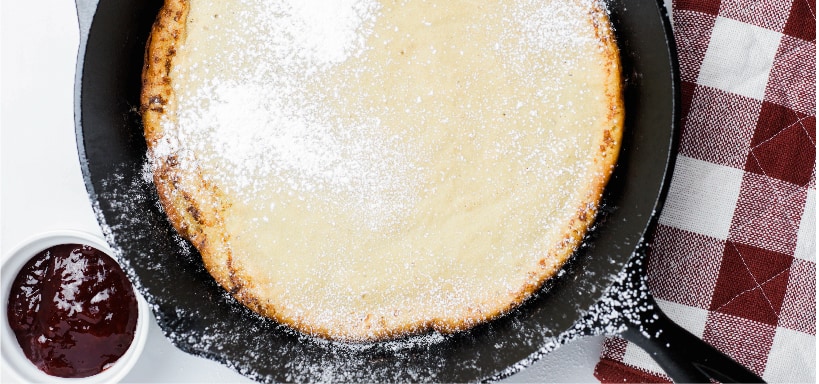
I love revamping a recipe that has an interesting history or long-standing tradition to fit my dietary needs. This German pancake recipe is no exception.
The history of the German pancake recipe or “Dutch baby recipe” has been passed down from generation to generation, with an interesting twist. The German pancake has been around a long time, although its exact birthday is not quite known.
Like many pancake recipes, this traditional recipe consists of using flour, eggs, sugar and butter to create a delicious, sweet breakfast treat. German pancakes are unique in that you use a cast iron to hold all of the batter and let it rise in the oven. The middle of the German pancake comes crashing down once it is removed from the oven, with the sides still puffed up around the edges.
German Pancake … or Dutch Baby?
If you have perused for this recipe before, you will find that German pancake and Dutch baby recipes are one in the same. The name, however, is where the discrepancies begin.
What is a Dutch baby? I discovered an interesting twist: Dutch babies were first introduced by a cafe called Manca’s in the early 1900s in Seattle, Washington. The recipe was inspired by the German Pfannkuchen, or German pancake. The owner of the restaurant was Victor Manca, and it is rumoured that his daughter could not pronounce the autonym for Germans: deutsch. She pronounced it as “dutch” when describing the pancakes, and the name has since stuck.
An innocent mispronunciation inadvertently created two names for one recipe, but either name you choose, you’ll be making a delicious (and healthier!) breakfast treat.
How to Make a German Pancake
Although I value and cherish recipes for their originality and history, the ingredients we use today look much different from the ingredients our ancestors used hundreds of years ago.
I swapped out enriched flour for cassava flour, conventional cow’s milk for full-fat coconut milk, and naturally used grass-fed butter and pastured eggs to bring this German pancake recipe together. And if you’re tired of regular-looking pancakes, even Paleo pancakes, this will be a welcome change.
I highly recommend using a cast iron skillet to make your German pancake. A cast iron skillet is not only durable and holds heat well, it can boost iron intake if you have an iron deficiency.
Begin this German pancake recipe by preheating your oven to 450 F. Place the cast iron skillet in the oven while it preheats. While the oven is preheating, add eggs into a blender and blend on high until eggs are frothy.
Next, add in coconut milk, cassava flour, coconut sugar, baking powder, vanilla extract, cinnamon and sea salt.
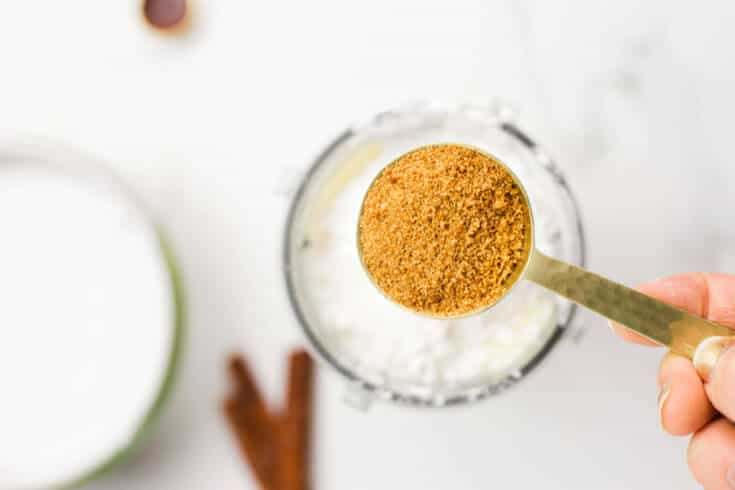
Continue blending until the mixture is thick and creamy. Once the oven has been preheated, remove the cast iron skillet from the oven and place cubed butter in the skillet.
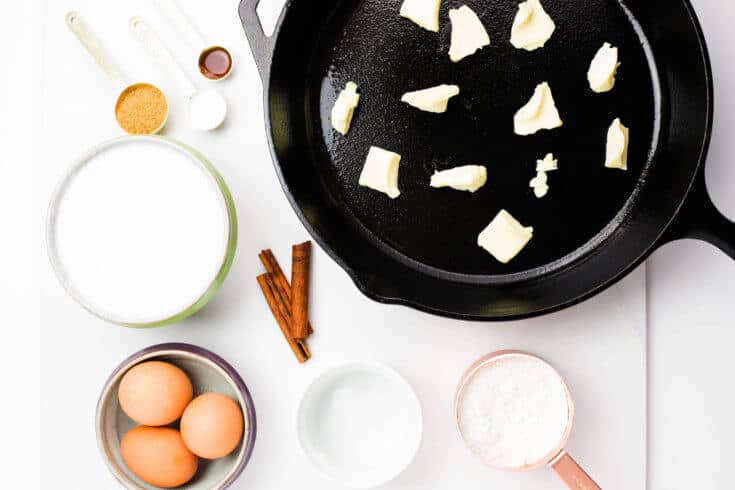
Let the butter melt completely and immediately pour the pancake mixture into the cast iron.
Place the cast iron skillet back into the oven and bake the German pancake for 15–20 minutes. The Dutch baby pancake will probably rise while in the oven, but deflate back down once removed from heat.
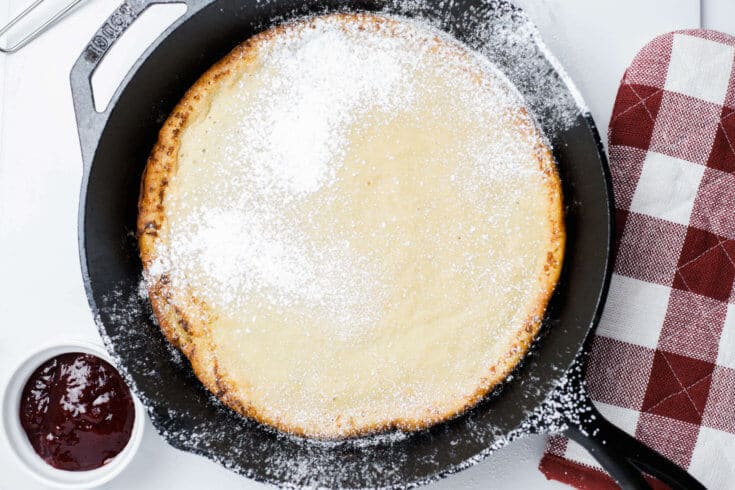
For added effect, sprinkle arrowroot starch on top and serve with strawberry or other fruit jam.
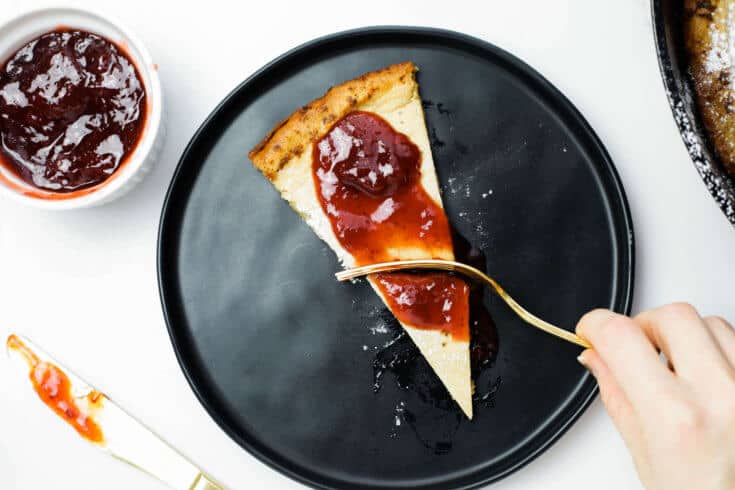
Serve immediately and share the interesting story of the ‘accidental’ Dutch baby recipe. It will be gone before you know it!
Print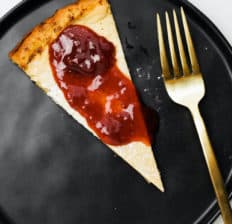
German Pancake Recipe
- Total Time: 30 minutes
- Yield: 4 1x
- Diet: Gluten Free
Description
Like many pancake recipes, this traditional recipe consists of using flour, eggs, sugar and butter to create a delicious, sweet breakfast treat. German pancakes are unique in that you use a cast iron to hold all of the batter and let it rise in the oven. The middle of the German pancake comes crashing down once it is removed from the oven, with the sides still puffed up around the edges.
Ingredients
Pancake:
- 4 tablespoons grass-fed butter, cubed
- 3 eggs
- 1 cup coconut milk
- ¾ cup cassava flour
- 1 tablespoon coconut sugar
- 1 teaspoon baking powder
- 1 teaspoon vanilla extract
- ¼ teaspoon cinnamon
- ¼ teaspoon sea salt
Topping (optional):
- arrowroot starch, for sprinkling
- low-sugar strawberry jam
Instructions
- In a 10- or 12-inch cast iron skillet, add in cubed butter. Alternatively, preheat the cast iron skillet first, then add in butter to the preheated skillet and let melt completely before adding in pancake mixture.
- Preheat oven to 450 F and place cast iron skillet in the oven as it is preheating.
- Add eggs into a blender and blend on high.
- Add in coconut milk, cassava flour, coconut sugar, baking powder, vanilla extract, cinnamon and sea salt.
- Continue blending until thick and creamy.
- Once oven has reached 450 F, remove skillet from the oven and pour pancake mixture into the skillet.
- Place skillet back into the oven immediately.
- Bake for 15–20 minutes.
- Serve hot with sprinkled arrowroot starch and strawberry jam, if desired.
Notes
Rather than a cast iron pan, you can also use a cake pan for this recipe.
- Prep Time: 10 min
- Cook Time: 20 min
- Category: Breakfast
- Method: Baking
- Cuisine: German
Nutrition
- Serving Size: 1 serving (161g)
- Calories: 360
- Sugar: 4.3g
- Sodium: 299mg
- Fat: 26.9g
- Saturated Fat: 19.1g
- Unsaturated Fat: 6g
- Trans Fat: 0.5g
- Carbohydrates: 25.4g
- Fiber: 1g
- Protein: 6.1g
- Cholesterol: 153mg
Comments
Please keep comments under 200 characters.


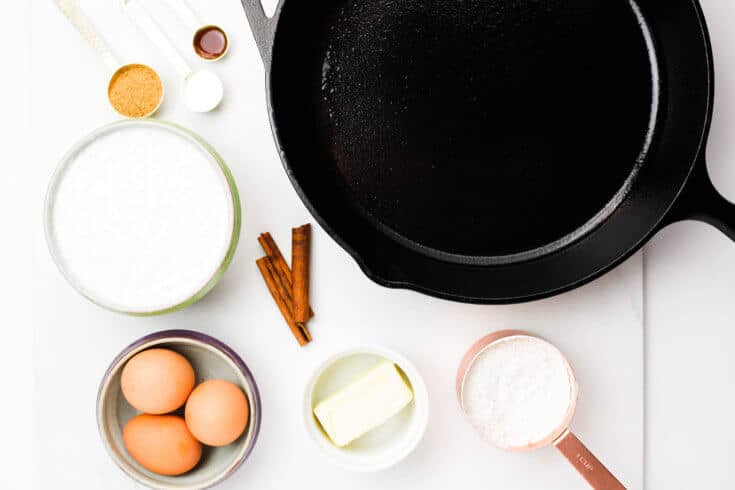


Any substitutions for the Cassava flour?
Try a Paleo flour mixture, such as: https://draxe.com/recipes/paleo-flour-blend/
Hello
The English in this recipe isn’t quit right I’ve noticed maybe you don’t mind…
A mi familia le encantó. Yo lo hice con premezcla de harina sin gluten y leche de almendra
Luz, I am glad to hear that your family enjoyed this recipe!